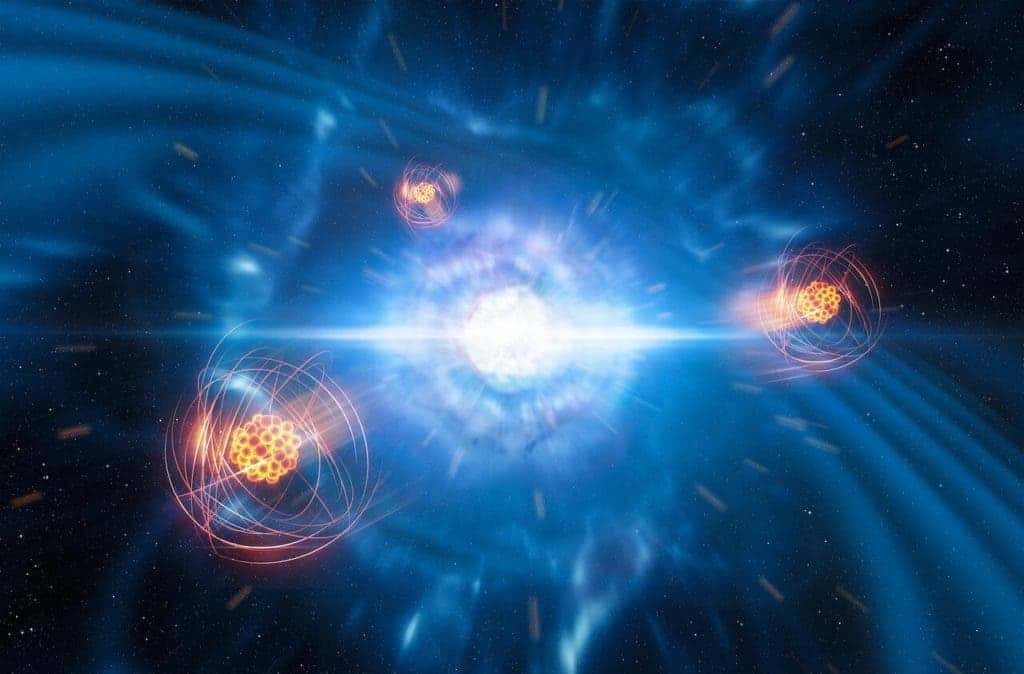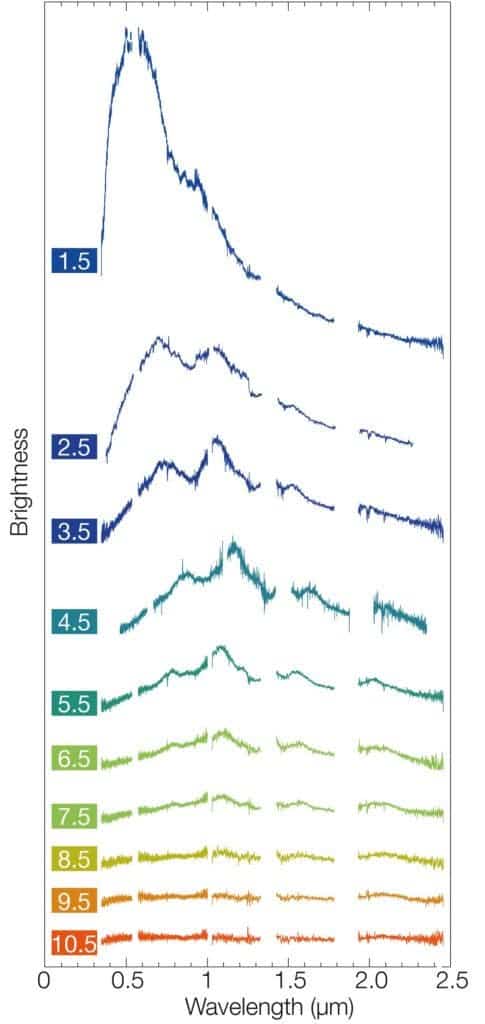Heavier elements like iron, calcium, and nickel are made after atoms fuse in massive stellar explosions known as supernovae. Other relatively light elements, like aluminum, are made inside giant stars and blown out into space by stellar winds. But until now astronomers weren’t sure how much heavier elements such as gold, silver, or strontium formed.
This is where a groundbreaking new study comes in — the findings suggest that strontium, and likely other heavy-weight elements, is produced in the aftermath of a merger of two neutron stars.

In 2017, astronomers detected a cosmic cataclysmic event: The merger of two neutron stars from 130 million years ago. The force of the collision was so strong that it literally shook the fabric of space-time, generating gravitational waves that eventually reached Earth, where they were detected. The two neutron stars either merged into a huge single neutron star or collapsed into a black hole.
A neutron star is the collapsed core of a large star — they’re the smallest and, at the same time, densest stars we know of. Most models suggest that they are made almost exclusively of neutrons — hence the name.
The existence of gravitational waves, which were first predicted by Einstein’s Theory of General Relativity about a hundred years ago, was confirmed only in 2016. The event was recorded by the Laser Interferometer Gravitational-Wave Observatory (LIGO), whose founders were awarded this year’s Nobel Prize in Physics.
Gravity waves are essentially ripples in the fabric of spacetime which are generated by interactions between very massive accelerating cosmic objects, such as neutron stars or black holes. Physicists liken gravity waves to the waves generated when a stone is thrown into a pond.
But, it’s not just gravitational waves that emerged out of the neutron star merger. The merger, known as GW170817, also generated a kilonova — a massive explosion that is much brighter than a regular nova but less so than a supernova. This was the first time that this type of nova was ever witnessed.
Scientists had suspected for some time that heavier elements may be forged during neutron star collisions. In a new study published in Nature, astronomers used ESO’s X-shooter spectrograph on the Very Large Telescope (VLT) to look for signatures of such elements in the kilonova.
Astronomers recorded a series of spectra from the ultraviolet to the near-infrared, which, when analyzed, revealed the presence of strontium.
Strontium is naturally found in the soil and some minerals. It’s what gives fireworks their dazzling red color.
To make strontium, other atoms need to be bombarded very rapidly with a huge number of neutrons under high pressure and temperature. The process, known as rapid neutron capture, needs to happen fast enough for an atomic nucleus to capture some of the neutrons before they decay in order to produce very heavy elements.
“By reanalysing the 2017 data from the merger, we have now identified the signature of one heavy element in this fireball, strontium, proving that the collision of neutron stars creates this element in the Universe,” says the study’s lead author Darach Watson from the University of Copenhagen in Denmark.
“This is the final stage of a decades-long chase to pin down the origin of the elements,” says Watson. “We know now that the processes that created the elements happened mostly in ordinary stars, in supernova explosions, or in the outer layers of old stars. But, until now, we did not know the location of the final, undiscovered process, known as rapid neutron capture, that created the heavier elements in the periodic table.”

This kind of research is still in its infancy. There is still much to learn about how neutron stars merge and their subsequent kilonovae. In the future, by analyzing more such events, astronomers hope to identify other heavy elements.
“This is the first time that we can directly associate newly created material formed via neutron capture with a neutron star merger, confirming that neutron stars are made of neutrons and tying the long-debated rapid neutron capture process to such mergers,” says Camilla Juul Hansen from the Max Planck Institute for Astronomy in Heidelberg, who played a major role in the study.
“We actually came up with the idea that we might be seeing strontium quite quickly after the event. However, showing that this was demonstrably the case turned out to be very difficult. This difficulty was due to our highly incomplete knowledge of the spectral appearance of the heavier elements in the periodic table,” says University of Copenhagen researcher Jonatan Selsing, who was a key author on the paper.









